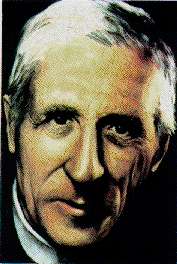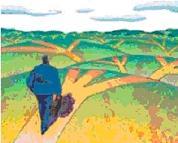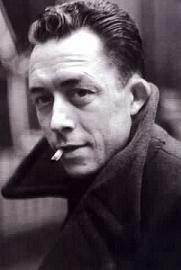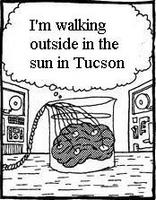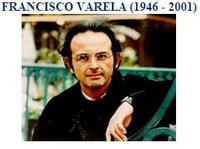 Mind Shadows Shakey, Beavers, and Cartesian Theater
Mind Shadows Shakey, Beavers, and Cartesian TheaterIn my 1 February article I make this comment: "So Consciousness may indeed be all, and I have no doubt it is. But I don't regard this situation as leaving Eastern thinkers with an I-told-you-so smugness. They have wrapped their teachings in doctrine, dogma, and ignorance, and have remained satisfied with ancient explanations for the enlightenment experience. They project an aura of beatitude over somebody who has experienced it. Its initial stage, the discovery of no-self, need not be wrapped in some mystical ballyhoo, however liberating the revelation. Some modern scientists and philosophers of consciousness accept it as a given and have quite good and well-reasoned explanations for it." (In a web article, "Beyond Belief," John Horgan quotes Stephen Batchelor, (Buddhism Without Beliefs) who says, "The scientific descriptions of the world generate to me a much deeper sense of awe and wonder than these Buddhist and religious sorts of fantasies." I agree with this.)
The traditions of Buddhism and Hinduism hold the discovery of no self as a religious experience, but it need not be decked out in ritualistic finery. In
Consciousness Explained, Daniel Dennett does not deny that we think of an ego inside us; he grants that he, too, does so from time to time. Instead, though, he regards the sense of self as a deeply entrenched mental habit. He uses various approaches to illustrate his argument, each approach demonstrating it from a different angle.
Case 1: In this instance his subject is a robot, about which I should make one disclaimer. I don't regard artificial intelligence as explaining away consciousness.* Rather, the robot example provides a simple and straightforward analogy for thinking about the phenomenon of ego.
First, since Dennett uses the term
Cartesian Theater, here is an explanation of what he means. He refers to Descartes' implicit idea of an intelligent homunculus, a little man, controlling things. In this theater the homunculus operates all the levers and switches, controlling operations between mind, body, and outer world. He is ego, or self.
Shakey illustrates one approach to Dennett's arguments. A robot of the late 1960s, Shakey was invented by Nils Nilsson and colleagues at Stanford Research Institute, a think tank in Menlo Park, California. The robot was a box with wheels and a television camera. Its brain too big for transport, Shakey used a radio transmitter to share data with a central computer. Scientists typed commands such as "push the box off the platform," and Shakey explored the room until it found the box, whereupon it located the ramp, then pushed the ramp to a platform. It then rolled onto the platform and pushed the box off the ramp.
It navigated by using software designed to recognize signatures--of boxes, pyramids, and other objects. These signatures registered on the electronic retina of its video eye. It rolled across the room and as an object came within video range, Shakey's computer measured gradations in illumination, detecting edges and corners. It processed these gradations according to algorithms that specificed how various objects looked from different vantages. Through this processing it determined if it detected the plane of a pyramid or the slope of a ramp.
Nilsson and colleagues could observe Shakey's behavior on a video monitor as it registered a dark blur, then traced the edges before declaring the thing a box.
But Shakey didn't need this monitor. It had no little man inside watching the screen. With the monitor unplugged, Shakey still went about its business. It had no impressions in its circuitry, no fleeting images of boxes and pyramids. It simply processed binary code, ones and zeros: 000000111010100101011111010.
It had no need of a Cartesian Theater, a homunculus, although it acted as if it had one.
Case 2: Dennett uses examples from nature. When a beaver builds a dam, it doesn't have to understand what it is doing. Nature has provided its brain with the necessary routines for the engineering. If it hears the sound of water running, leaking, through its dam, it will plaster everything around the sound. In one experiment, it pasted mud all over the loudspeaker from which the recording of gurgling was emitted.
Likewise, each human being makes a self. "Out of its brain it spins a web of words and deeds, and, like the other creatures, it doesn't have to know what it's doing; it just does it." Elsewhere: "Our fundamental tactic of self-protection, self-control, and self-definition is not . . . building dams, but telling stories, and more particularly concocting and controlling the story we tell others--and ourselves--about who we are." (To awaken is to understand that nobody tells the story. It tells itself. Nobody needs to tell it, and therin lies a great sense of freedom.***)
Among many examples, he cites Multiple Personality Disorder, in which people claim more than one self: "The normal arrangement is one self per body, but if a body can have more than one, why not more than one under abnormal conditions?" His point is that the self is a construct.
My comments: * I differ from Dennett in that I regard consciousness as accessible from a separate vantange, the kind implied by Stephen Jourdain** or Ramana Maharshi. Just as quantum physicists are discovering, Dennett's approach will ultimately reveal itself as a kind of infinite regress. It will continue to expand boundaries of research rather than finally explain consciousness. Still, he and others like him have done very good work, which is much needed. It helps remove the smoke and mirrors by which religions have held people in thrall. Because of the halo-effect projected on gurus, even some individual seekers remain relatively naive about their quest. **( Jourdain awakened at age sixteen after pondering Descartes'
cogito ergo sum--
I think therefore I am.)
*** To remain morally engaged with the world, we must slip into the story, try on a sense of self now and then. But is the world itself a story? Perhaps, even probably, but the situation is like taking a soothsayer to a horse race. One's sense of the world as story may be rather like the prophet's ability to predict. Consider this from 25 November,
Yoruban-, Sport- , & Zen-consciousness:
"[Even if he can prophesy future events,] would I take a Yoruba tribesman to a horse race to help me pick a winner? No. Not that I doubt his ability to predict but that, as a scientific experiment, it could not be repeatedly verified. Assume that such prediction has hits and misses, with probability greater than chance that predictive hits outnumber misses. That is good, but not enough to place five grand in the Trifecta on Whodunnit and other thoroughbreds."
The point: One can sit in lotus position and watch the world go to hell in a handbasket because he believes nothing can be done, or he can take the perspective of Zen from which ultimate knowledge cannot be claimed. ( People like Ramesh Balsekar claim we have no choice, regardless. All is predetermined. They make claims that even Buddha avoided. Why can it not be said that Choosing chooses? That is, just as potentia exist before observation collapses the wave function of quantum physics, why can't potentia exist before "choosing chooses"?--before consciousness processes a history of intentions into a
fait accompli ?
Home

 Blindsight: Graham Young Is Blind But Can See
Blindsight: Graham Young Is Blind But Can See


